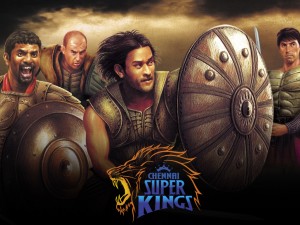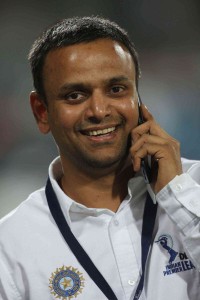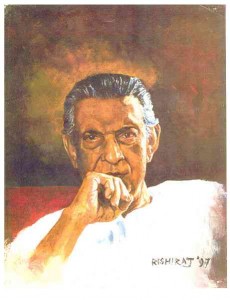Apparently, most inventions and technologies have their roots in jargon. In fact, jargonizing is the favourite pastime of almost all tech companies. So, when they are not conjuring up innovative software or hardware solutions, they are prone to cook up some mumbo-jumbo. Usually, these jargons are in the form of acronyms and over a period of time through repeated usage they tend to take on real shape. Sample some of the jargons that have become real, like NC (network computers), ERM (enterprise resource management), RIM (remote infrastructure management, Grid computing, SOA (service oriented architecture), etc.
Cloud computing is the latest cloud on the block. The term today encompasses a lot more than it innocently declares, and often means different things to different people. Accordingly, cloud computing stands for SaaS (software as a service), PaaS (platform as a service) and IaaS (infrastructure as a service). But that isn’t all; it also incorporates Web 2,0 and HyperWeb functionalities. At the basic, it simply means ‘doing things over the Web’, the cloud tantamounts to Internet in this case.
While there is some sort of clarity on what a ‘cloud’ is and what it should be doing. But, there is little or almost no clarity on how one ‘cloud’ should be reacting to another ‘cloud’ or rather working with other clouds. The reason is fairly obivious, the companies that are working on cloud computing, are basically doing in a very personal and private way. Thus, you have the IBMs, the Googles, the Amazons, and the Salesforce.coms of the world who are building and rolling out services and solutions in a cloud architecture. But these are unique to the company and usually have little or nothing in common with others. Hence, there are myriad clouds floating over cyberspace that don’t recognise each other and neither want to either. It is as if every company is in love with its cloud and wants their client to only be bound by their own. There is little trust in cloud computing. Continue reading






 long line of innovations that the league has pioneered from the start. We did a calculation last year and 100 per cent matches went over an hour beyond their schedule time. It was just one delayed game after another and this inspite of the fact that we had enforced extremely high penalties. What we discovered then was that a majority of the time teams were ready to pay the money because the coaches and captains/players were consulting one another as the playing situations evolved on-field to fine tune their strategies. It is because of this discovery that we attempted to innovate with this new ‘strategy break’ at the end of 10 overs.
long line of innovations that the league has pioneered from the start. We did a calculation last year and 100 per cent matches went over an hour beyond their schedule time. It was just one delayed game after another and this inspite of the fact that we had enforced extremely high penalties. What we discovered then was that a majority of the time teams were ready to pay the money because the coaches and captains/players were consulting one another as the playing situations evolved on-field to fine tune their strategies. It is because of this discovery that we attempted to innovate with this new ‘strategy break’ at the end of 10 overs. e vestiges of that numbness. But it is wearing off quite steadily, especially when Tutul simply refuses to do as I wish and seem to merely wish as he does.
e vestiges of that numbness. But it is wearing off quite steadily, especially when Tutul simply refuses to do as I wish and seem to merely wish as he does.
 er’s repertoire, starting with Pather Panchali and if possible going on till Agantuk. Probably all his contemporaries and admirers like Renoir, Bergman, Bunuel, Fellini, Kurosawa must have arrived from their respective heavens, revisiting his masterpieces, discussing, dissecting and deliberating on them. Meanwhile, the birthday boy himself, would be sitting in a corner, away from the glare, dressed up in white dhoti-kurta and a shawl draped over his torso. Sitting cross-legged, a pipe hanging from his mouth sending out small small tufts of tobacco clouds quite like the steam engine in Pather Panchali that amused Apu and Durga. Satyajit Ray or Manikda as he was known within the film fraternity, must be observing all and sundry with intent full eyes, and probably thinking of what more embellishments could have been made to these movies or how many more he could have made, only if he had seen Bicycle Thieves a little earlier or the finances had flown in evenly through the years. Or just probably, he might be seeing those movies now not as a maker but as a viewer and enjoying them as thoroughly as we all do.
er’s repertoire, starting with Pather Panchali and if possible going on till Agantuk. Probably all his contemporaries and admirers like Renoir, Bergman, Bunuel, Fellini, Kurosawa must have arrived from their respective heavens, revisiting his masterpieces, discussing, dissecting and deliberating on them. Meanwhile, the birthday boy himself, would be sitting in a corner, away from the glare, dressed up in white dhoti-kurta and a shawl draped over his torso. Sitting cross-legged, a pipe hanging from his mouth sending out small small tufts of tobacco clouds quite like the steam engine in Pather Panchali that amused Apu and Durga. Satyajit Ray or Manikda as he was known within the film fraternity, must be observing all and sundry with intent full eyes, and probably thinking of what more embellishments could have been made to these movies or how many more he could have made, only if he had seen Bicycle Thieves a little earlier or the finances had flown in evenly through the years. Or just probably, he might be seeing those movies now not as a maker but as a viewer and enjoying them as thoroughly as we all do.